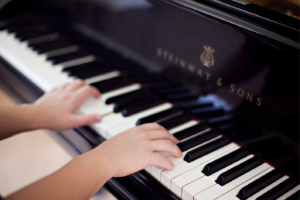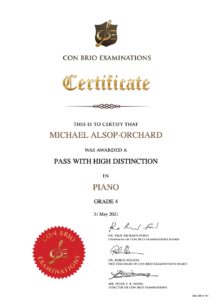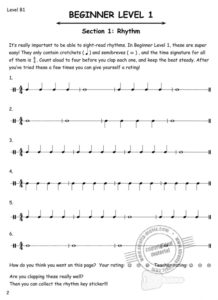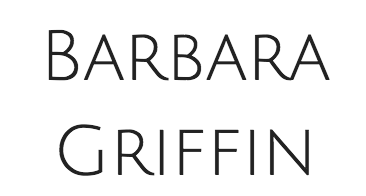Piano Lessons in the Southern Highlands
 Thanks for your interest in Piano Lessons in the Southern Highlands. I teach from my home on a German built Steinway baby grand right in the Bundanoon ‘CBD’. I also have a Yamaha grand in the garage studio below the house, and a (digital) virtual pipe organ with full radiating pedal board. Plus other keyboards! My students have achieved 34 High Distinction results and 2 distinction results since 2020. You can see their performances on the Hall of Fame here (search for my name as teachers are now credited). https://www.conbrioexams.com/hall-of-fame Currently I am full, but do feel free to email me in case I have a vacancy come up, as they do tend to throughout the year as students change slots due to sports etc – or else I can refer you to a trusted colleague.
Thanks for your interest in Piano Lessons in the Southern Highlands. I teach from my home on a German built Steinway baby grand right in the Bundanoon ‘CBD’. I also have a Yamaha grand in the garage studio below the house, and a (digital) virtual pipe organ with full radiating pedal board. Plus other keyboards! My students have achieved 34 High Distinction results and 2 distinction results since 2020. You can see their performances on the Hall of Fame here (search for my name as teachers are now credited). https://www.conbrioexams.com/hall-of-fame Currently I am full, but do feel free to email me in case I have a vacancy come up, as they do tend to throughout the year as students change slots due to sports etc – or else I can refer you to a trusted colleague.
Piano lessons for Children
Teaching children to play the piano, make progress, and experience the joy of playing great sounding pieces all by themselves on a musical instrument is a great joy to me. The way I teach a child definitely varies from child to child depending on their age, experience, musical ability, personality, level of self-confidence and tastes, and the parents’ desires for the child and ‘brief’ to me. The relationship I have with the child is important, too. I am friendly, upbeat and casual, and a little bit ‘arty’ in style, so your child should feel comfortable with me, yet I uphold a respectful and professional tone in the lesson at the same time.
Parental Supervision
Generally parents or guardians drop the child and then leave, and arrive back for the last few minutes of the lesson to pick the child up. You are welcome to attend the lesson, and even video it if you like. I have Working With Children check (number WWC0930355V). I have also completed the ‘Safe Ministry Training’ for working with children in a ministry position through the Anglican Church. I also have current public liability insurance through AEON.
Inspiring the joy of music
 I think most parents would be happy if their child learns to appreciate music through learning the piano, so this is one of my highest priorities. Often the piano is the child’s first instrument. It is a very good instrument to learn music and musicianship on. It ‘ports’ well to the keyboard, as well as arranging and producing using computer technology, if the child is interested down the line. It is also great ‘cross training’ and good for general musicianship if the child is already learning another instrument, particularly drums (piano ports well to tuned percussion) and solo instruments (such as wind instruments or strings) as the child will also learn about harmony.
I think most parents would be happy if their child learns to appreciate music through learning the piano, so this is one of my highest priorities. Often the piano is the child’s first instrument. It is a very good instrument to learn music and musicianship on. It ‘ports’ well to the keyboard, as well as arranging and producing using computer technology, if the child is interested down the line. It is also great ‘cross training’ and good for general musicianship if the child is already learning another instrument, particularly drums (piano ports well to tuned percussion) and solo instruments (such as wind instruments or strings) as the child will also learn about harmony.
Unlike the guitar which needs larger hands or the purchase of a smaller instrument, it is possible to play the piano even if you have very small hands. Because the piano is a percussion instrument (you merely press the keys, and they sound) it does have quite a fast progress rate.
Technique is taught as the student is ready. For example, first we learn ‘the notes’ in the correct timing, with the correct fingering, with separate hands. Then, the child will play one hand while I play the other hand, getting to know how it will sound together. Next, the child will learn to put both hands together (slowly). When the child is confident, we can gradually increase the tempo to ‘performance’ tempo.
Along the way, I will also teach the child to put expression into their playing, such as ‘bringing out the tune’ in the right hand by playing it louder than the left hand, or emphasising certain passages by playing them louder, as well as creating dynamics in a piece by learning to play sections more softly (this requires more technique control than playing loudly!)
I will also teach the child, if appropriate to the piece, to incorporate subtle tempo changes in the piece, such as to slow down subtly before a key moment in the piece, and then return to tempo. The result is that the child sounds very competent, playing their piece not only with all the correct notes and timing, but with ‘expression’ – like a real musician!
I also tend to teach the child to use the sustain pedal, as soon as it can be managed (and if the child’s feet can reach the floor!) The child will then learn to co-ordinate the feet and the hands from the get-go and also learn what the sustain pedal actually does, how to use it correctly and which notes to release and depress the pedal on, so it sounds musical and smooth and doesn’t ‘clunk’.
Scales and Arpeggios
I do teach scales, but I would generally teach pieces first for a few weeks to a new student before introducing scales. Scales are not always taught, it depends on the age and ability of the child. However if the child is progressing well, I will recommend starting to teach the AMEB syllabus, starting with ‘Preliminary’ grade, if the child is a complete beginner. After scales have been introduced, I then introduce arpeggios. The scales and arpeggios I would teach a student would correspond to the AMEB Grades level that the child would be on, even if they are not doing grade exams yet/ever. I teach scales and arpeggios as part of piano lessons whether the student will progress to exams or not, simply in the interests of a well-rounded piano tuition and technique.
Exams
I truly believe they are just so beneficial, especially with the flexible video submission examiner I am using these days. I believe most students may thrive on them, in terms of it being ‘like school’ in that you learn skills, get tested on them, and then move to the next level. Exams and concerts are the two things that tend to inspire excellence (because someone other than your friends, family and teacher will be listening) and this is a great motivation! In general, the pace may be ‘one grade per year’ with most children being able to achieve Preliminary grade within one year of lessons, provided they do a little practice. Even 5 minutes a day, or ten minutes a few times a week, will really zoom the child’s progress. However even children who don’t practice at all will progress, though more slowly.
Theory
Theory is very important, however so as not to ‘waste’ lesson time on it, I will give parents a printable PDF of theory work-sheets suitable for any age above about 5 or 6 (when they can read.) They are easy and fun and most or all of the children really enjoy doing them! The brand of book I use is called ‘Blitz’ and they are excellent. After a while when the child has learned the notes (through the theory work sheets) and has been learning the piano for a few weeks, they will start to be able to learn and find the notes on the keyboard, and pretty soon it ‘all comes together’ and the child will be able to sight-read (to a preliminary grade level) within a year, as well! The theory book is self-explanatory and written in a fun way. They are work-sheets that the child can fill in. It is not necessary for me to ‘mark them’ but feel free to bring them if you would like me to take a look.
The worksheets go through the basics: the lines of the stave, the names of the notes, note lengths, and eventually key signatures, accidentals, ornaments and so on.
This way the child quickly progresses through the theory by themselves (with my help only if needed) in parallel to the piano lessons, without taking up valuable time, and then during lessons we ‘tie in’ what they have learned theoretically with the practical knowledge.
There is also an ‘app’ to learn to recognise notes faster (like a game!). This helps the child eventually be able to sight-read music as the note recognition gets faster and faster!
Like scales and arpeggios, I try to keep the student in pace with theory appropriate to their level of piano ability, in case they want to do exams one day, and also just to help ‘pull it all together’ in terms of what they are playing and their knowledge and understanding of music theory. Music theory tends to make sense to a student when they are experiencing it as a ‘real thing’ by actually playing music on an instrument.
AMEB Grade Exams vs Con Brio
As a student who did exams as a child myself (AMEB is an Australian thing, it’s similar to the Royal Schools of Music and Trinity College exams that are out of the UK which we had in NZ) – and achieved mostly high distinction marks, I am aware of the range of repertoire required to sit Grade Exams (such as AMEB in Australia.) If you would like your child to sit AMEB exams please discuss it with me.
Although I would probably say that AMEB is one of the top shelf examiners in Australia, as you are examined live and have to do scales, arpeggios, sight-reading and ear tests, plus play your pieces, and do it all on a particular date (deadline.)
When Corona happened, AMEB went online and now there are video repertoire exams (which you can sometimes also do face to face) which skip out the scales and ear tests.
AMEB has a syllabus where you have to have a piece from List A, List B, List C, and so on. These are different kinds of pieces, i.e. a technical or baroque piece, a classical era piece, and a ‘contemporary’ piece, plus you can do an ‘own choice.’
I like to play the student a few pieces and let them choose from each list – it gives them ‘ownership’ in the experience! – or I can choose for them) a selection of pieces from the prescribed syllabus for that grade. There are two types of piano exams you can take, the ‘classical’ kind, and a more recently introduced kind called ‘Piano for Leisure'(also a great source of ‘own choice’ pieces.) This has a more contemporary (meaning pop, easy listening and jazz) kind of material.
Both streams are good and valid and there is no reason why your child can’t do both or switch from one to the other. I usually teach ‘classical’ as it’s ‘better’ (more options down the track). ‘If you can play Bach, you can play anything!’
Please note that extra charges apply for piano exams. There are fees to sit the exams, plus you are supposed to purchase genuine copies of the Syllabus sheet music. (or borrow mine!)
An alternative I love – Con Brio Exams
 I first heard about Con Brio from a Facebook group of Australian Piano Teachers, and I must admit their business model is amazing and I super-love them (as do my students) and I think I wouldn’t go back to AMEB unless a parent wanted me to, and here’s why:
I first heard about Con Brio from a Facebook group of Australian Piano Teachers, and I must admit their business model is amazing and I super-love them (as do my students) and I think I wouldn’t go back to AMEB unless a parent wanted me to, and here’s why:
1. AMEB has video exams but you have to play all 4 or more pieces at once in one take. This is harder! And way harder to do more than one take in a piano lesson. Con Brio allows the pieces to be filmed individually. Much easier!
2. AMEB requires at least 4 pieces. Con Brio, only 3. This is easier for the student to achieve!
3. AMEB has a syllabus you must buy which changes every two years, and they publish their own books which you sort of have to buy every two years too. Con Brio has an online searchable syllabus of 30,000 pieces and if a piece you want to do is not in the syllabus, you can apply for it to be evaluated and added – I have done this several times for students and it’s been accepted within hours or days.
4. AMEB makes you do pieces from each of their lists. This is all very well for some students but others, I have found, struggle with pieces they don’t like or are in a certain genre. Con Brio allows you to select ANY 3 pieces of the grade, allowing the students to concentrate on the style they like.
5. AMEB only has two deadlines per year (even with video exams!) and you have to apply months before you submit. Therefore it’s hard to predict in April (when you have to register by) if the student is going to be ready by July. Con Brio, you just wait until the student is ready and then submit the videos. There is an any-time deadline!
6. Price – AMEB exams are 30-50% more expensive. Con Brio seems to be an international co-venture (it is in 50 countries) with links to the Sydney Conservatorium of music (the head of Keyboard studies is involved) and links to Chinese Conservatoriums. I have had high quality examiners and am very happy with the standard of examining.
7. Flexibility – if you want to re-sit Con Brio to get a higher mark (let’s say you got a B and you want an A) you can! AMEB does not allow this.
8. Any time submission means you can go as fast or as slow as you like. Some of my students are managing two grades per year almost, because they don’t have to wait for the AMEB intakes/deadlines.
9. Exam take videos are done in lessons and the student doesn’t have to go anywhere. I usually take videos weeks before they’ve ‘got it’ – I tend to start filming as soon as the piece can be played fluently from start to finish. This gets the student used to the camera. Over the next weeks, the student will see and hear the piece get better and better. Along the way, (when they are within reach), I will play the student a recording of another student who got high distinction. This shows them the standard and gives the final spur and a concrete ‘level’ to aim for.
10. Con Brio has a hall of fame on their website, and every student’s exam videos go on the hall of fame if they get High Distinction. This is another great motivator!
11. Just about any piece the student may have learned for any other examining body syllabus (AMEB, ABRSM, Trinity, etc) will be allowed in the Con Brio syllabus.
Since I swapped to Con Brio during Corona, I have put in 36 video exams and 34 got High Distinctions (A plus results)!!! I think the ‘secret to my success’ (or rather the student’s!!!) is that I wait until the student has achieved ‘all the things’ that will get the high distinction, and only then submit the videos. Those things are: Being able to play the piece fluently and error-free (or only a minor slip or two) and at a good tempo, in time, observing the dynamics as marked on the score, including ritenuto, (slowing down), and so on. Exams are not competitive – that is, there is not a percentage of students that have to fail. They are simply like a grading. If you have achieved the benchmarks for that grade, at a high level, you will get High Distinction!
For example, in Preliminary grade, the students have been learning to play with both hands, and all fingers. Sometimes you will have to do staccato with one hand and legato with the other. You will also have to be able to play forte (loud) and piano (soft) and possibly some shades in between. Exams ‘benchmark’ these skills as they are learned.
I think it is fantastic for a child to be able to get a shiny certificate (which has gold embossed on it) saying they got High Distinction. As I have said to some students, ‘if you can conquer the piano you conquer yourself’. In this way learning the piano is like learning anything. You start, it’s hard. You persevere, you take it slowly at first, it’s a bit excruciating, then suddenly it’s easier; then with just a bit of regular effort, suddenly it ‘comes’ and you can do it faster and then, effortlessly. Once it is effortless, the artistry and interpretation can be heard. Like cutting and revealing a diamond!
Videos
I often make videos (either on my phone, that I later send to the child or parent) or on the student’s phone for them to refer to later. I do this some lessons but not all. The videos may show a section of the piece played by me, showing fingering and technique that the child can review at home. Or, it could be a video of the child’s hands. This stops them failing to practice because they can’t ‘remember how it goes’! This is especially important when starting out, and the child can’t necessarily refer to the sheet music and ‘read it’. It’s also great for parents to be able to ‘share’ progress of the child with (for example) grandparents living elsewhere. I post the videos to youtube but they are private, (not searchable or viewable by the public) but can be shared.
Fingering
I will teach fingering that I think is appropriate as soon as it can be achieved, and generally the child will learn it with ‘muscle memory’, but we do ‘write in’ fingering in pencil if necessary. Sometimes the music has fingering already written in.
I really enjoy watching a child make progress as the hand position on the keyboard begins to look more and more natural over time, and the child starts to assume ‘natural’ fingering intuitively ‘all by themselves’ as the new neural pathways get ‘written’ in the brain as the child learns new ‘moves’.
You probably already know how good music is for the development of a child’s brain, but if not, read this article!
Variety
If a child has just begun and has learned, say, a pop song they love; the next piece I might give them might be something different.
Progress
I think most children and parents would be impressed at how fast their child is progressing. I make sure we have some what I call ‘easy wins’ – pieces that sound good, fast – and aren’t too hard for the child. Often we will learn some of a piece and if it proves too hard, learn another one in between. Then, when we go back to the piece that seemed ‘too hard’ often the student is more than ready for it.
The child likes the material
It is important that the child likes the material they are learning and that it suits their level of ability. If the material is too hard, it takes too long to learn and the child gets ‘stale’. I endeavour to find pieces that the child can learn within approximately 6 weeks, and that will sound nice and rewarding even while practicing.
Although I do my best to choose material for the student that they will like and which also suits their level of
ability, I do like the child to have a say in the process. For example, if they would like to learn pop songs, I would get the child to suggest a few of their favourite songs. Often I create custom sheet music especially for the child to play their favourite songs.
Adult Students
Adult students are welcome. Either complete beginners, or resuming piano lessons after a break. The first lessons I’ll be vibing where you are at and I can then either help you learn pieces of your choice, or suggest some lovely pieces that you can learn fast for maximum satisfaction!
Sightreading
 I am very strong on sightreading, as it is everything! It means that theory of music is almost automatically or organically understood, and that later the student will be self-contained and able to learn or read any music they may want to play. I also teach chords and chord-chart reading, and pop songs, even during the first year of piano and even for little students. There is nothing like the experience of leading a singalong that participants will remember for ever, and my students will be able to make these sort of memories with their friends and families!
I am very strong on sightreading, as it is everything! It means that theory of music is almost automatically or organically understood, and that later the student will be self-contained and able to learn or read any music they may want to play. I also teach chords and chord-chart reading, and pop songs, even during the first year of piano and even for little students. There is nothing like the experience of leading a singalong that participants will remember for ever, and my students will be able to make these sort of memories with their friends and families!
Thankfully I have discovered the most amazing materials that believe it or not, mean that sightreading is now a beloved activity by my students!
Singing Lessons
I also offer singing lessons, in the style of pop or jazz. Usually students will get to sing while I accompany, and after the song is sounding good, I’ll make a recording with you (no extra charge, just as part of the lessons.) You’ll really enjoy the recording process and get to have a permanent record of your work! I will make you sound amazing! (This can be also combined with piano lessons if you want to learn how to play and sing!)
Prices
Rates: as per MTANSW
$105.60 per hour (Private) with GST included
I suggest 20 minutes for young beginners, 30 minutes for older beginners (say 7 onwards) and 45 minutes for high school/college students, and adult students. I can sometimes come to you if location can fit into my schedule, particularly in the daytime or after 7pm. 3-6 is the busiest time slot. I also have some availability on weekends.
I am currently full but to enquire about waitlist or possible vacancies, text 0438 16 18 15 or email me.
If you would like to know more about my professional background, you can read this page.
